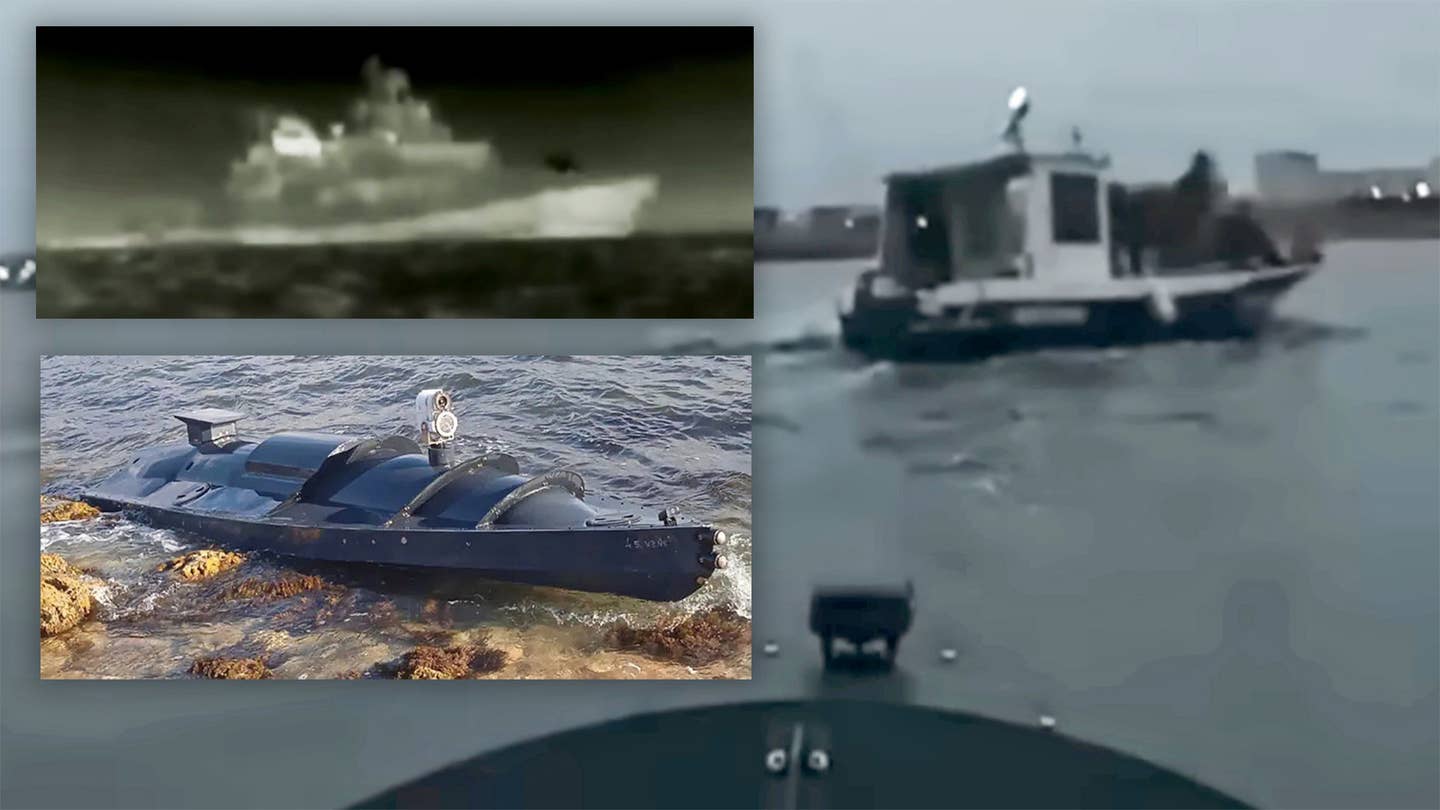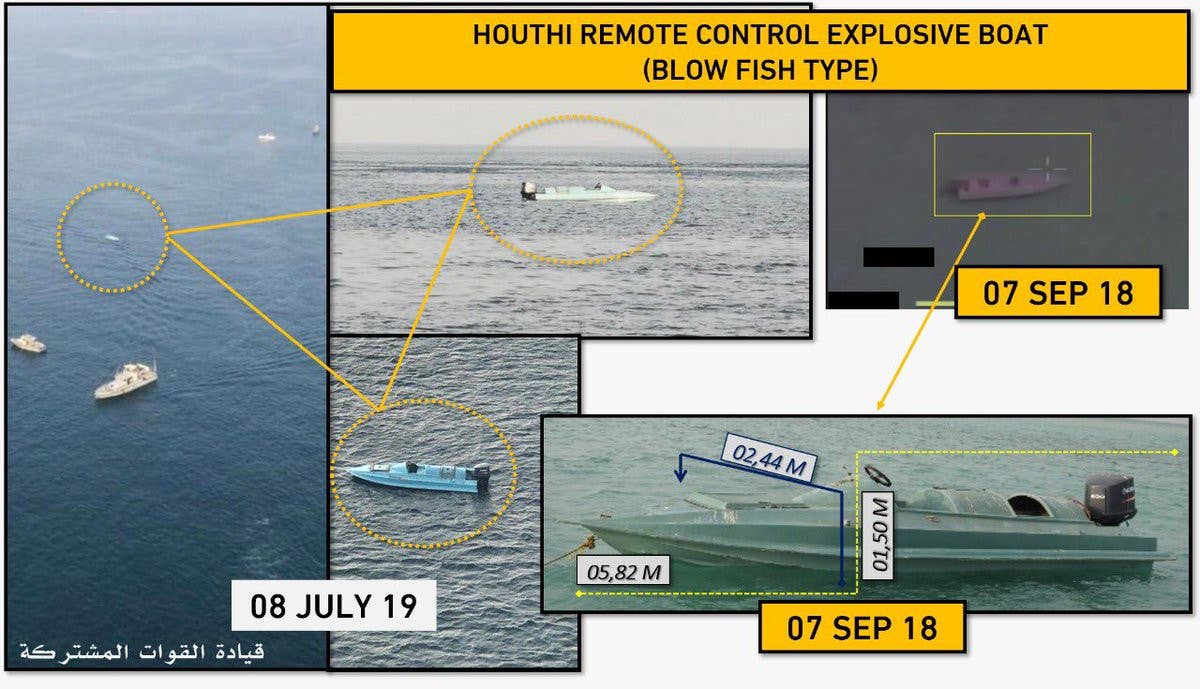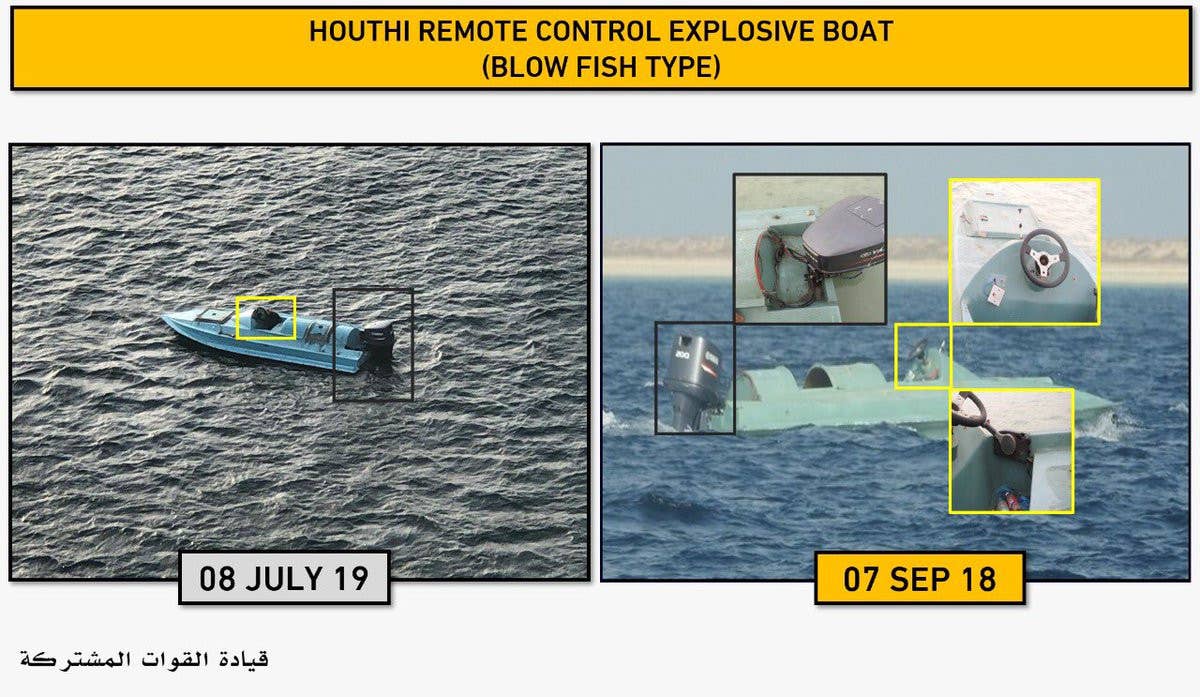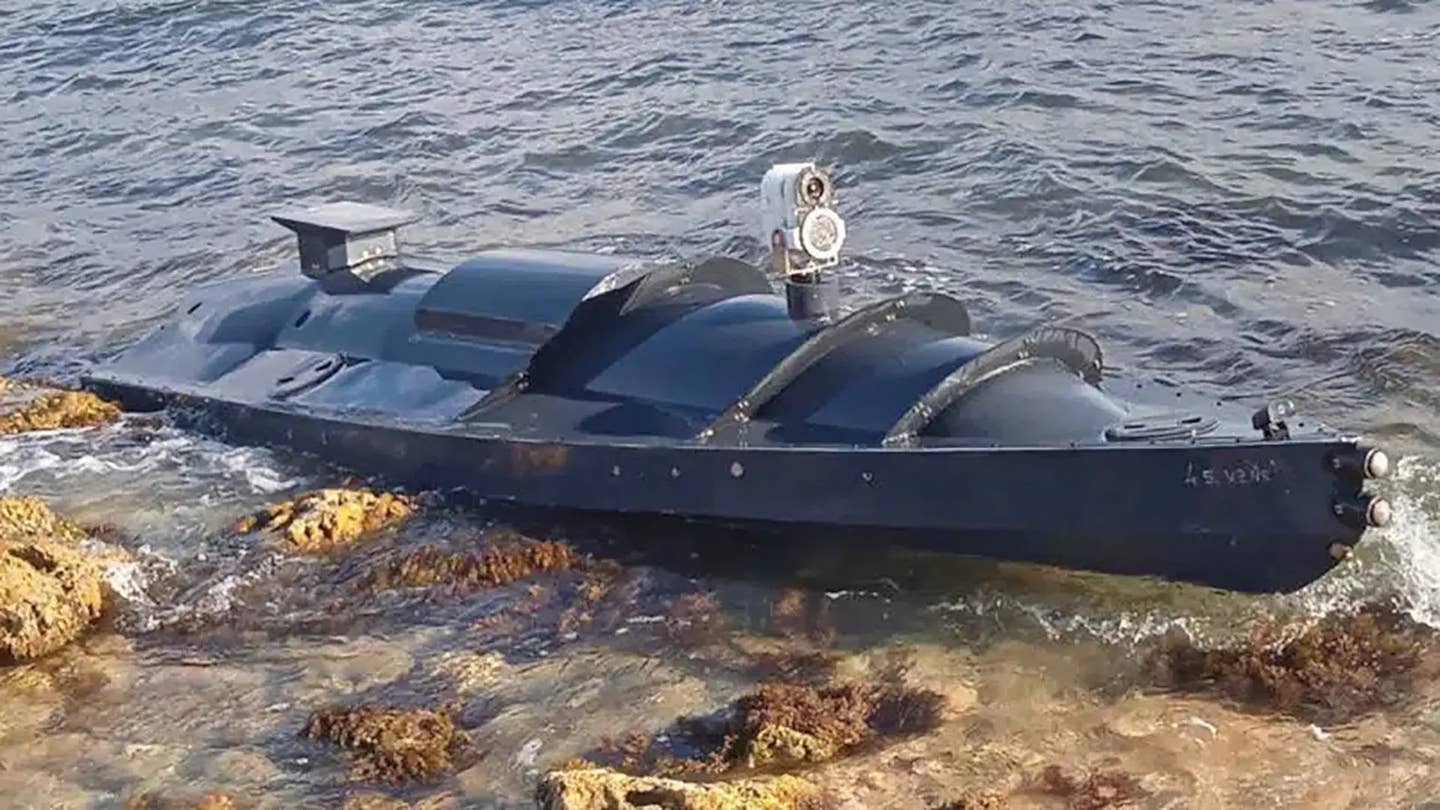TYLER ROGOWAY

The multi-unmanned surface vessel assault on the home of the Russian Navy's Black Sea Fleet in Sevastopol, Crimea marked a new point in unmanned warfare. We have gotten quite of few of these kinds of seminal moments in recent years — the arrival of weaponized off-the-shelf and homemade drones in Mosul, the long-range mass drone attacks on Saudi Arabia's oil infrastructure, and the assassination attempt via drone on Venezuela's Maduro, to name a few. But the attack on Sevastopol also marked a historic point in the history of naval warfare, although to what degree will surely be debated. While not revolutionary, the operation was certainly evolutionary, and that makes it quite important. Here's why.
The level of success of the attack, which you can read all about in our initial reporting here, is still to be determined, but it really doesn't change the optics of it and especially the precedent that it set.
That's not to say that we haven't seen 'suicide' drone boat attacks before. The basic concept is anything but new and in some cases dates back a century, with influences running even farther back into the annals of military history.
I will save the history lesson for later, but in more recent times, Iran and their proxy clients largely pioneered this capability operationally, converting small boats into explosive-packed radio-controlled weapons. Nearly six years ago, one struck a Saudi frigate in the Red Sea.
But Iran's early use of improvized explosive-laden drone boats — Tehran has since evolved its capabilities in this regard, too — was a far cry from what was used Saturday morning in and near the Russian-occupied port of Sevastopol. What were up until recently crude, jury-rigged devices have morphed into purpose-built, or at least semi-purpose-built, weapon systems.
 Images of improvised suicide drone boats deployed by Iran and/or its Houthi proxies in Yemen. Government of Saudi Arabia
Images of improvised suicide drone boats deployed by Iran and/or its Houthi proxies in Yemen. Government of Saudi Arabia Government of Saudi Arabia
Government of Saudi ArabiaWhen Ukraine's unmanned suicide drone boat configuration first appeared on a rocky Crimean shoal in late September, it was clear that they would become a major threat to contend with. The jet-black, very low-slung, jet-drive propelled almost kayak-like boat sported multiple camera systems, bow-mounted impact detonation sensors, and what appeared to be a satellite communications antenna, and was in a very different class than what we have seen before for this type of weapon.
 Ukraine's suicide drone boat that washed ashore nearly a month before the attack on Sevastopol.
Ukraine's suicide drone boat that washed ashore nearly a month before the attack on Sevastopol.This was a near if not purpose-built configuration meant to be fast, maneuverable, hard to detect and engage, and above all else, it appeared to allow for beyond line of sight control. While not an uncommon capability on unmanned surface vessels today, it is new for ones that are intended to be expendable anti-ship weapons in their own right. Here is what we wrote about these boats, their surprising control architecture, and the implications of their use as part of our original reporting on the attack:
No comments:
Post a Comment